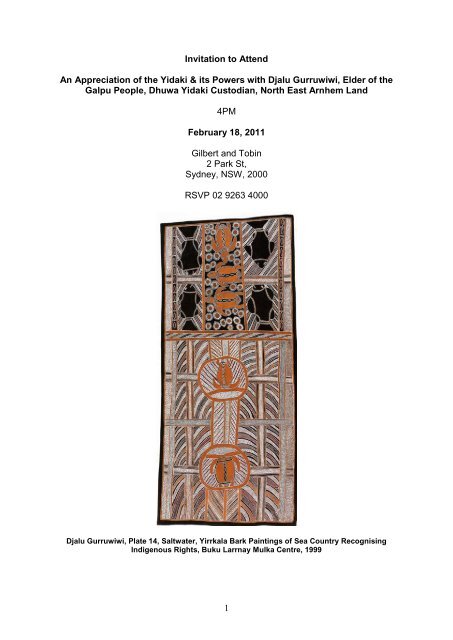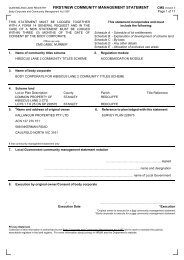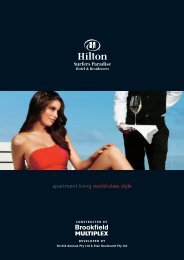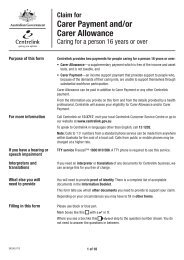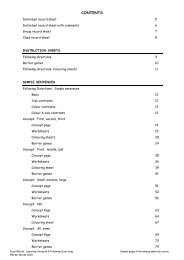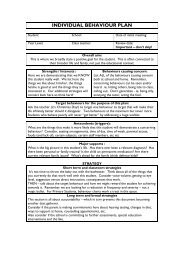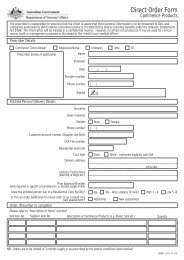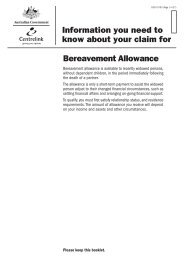Proposal to Danny Gilbert
Proposal to Danny Gilbert
Proposal to Danny Gilbert
You also want an ePaper? Increase the reach of your titles
YUMPU automatically turns print PDFs into web optimized ePapers that Google loves.
Invitation <strong>to</strong> Attend<br />
An Appreciation of the Yidaki & its Powers with Djalu Gurruwiwi, Elder of the<br />
Galpu People, Dhuwa Yidaki Cus<strong>to</strong>dian, North East Arnhem Land<br />
4PM<br />
February 18, 2011<br />
<strong>Gilbert</strong> and Tobin<br />
2 Park St,<br />
Sydney, NSW, 2000<br />
RSVP 02 9263 4000<br />
Djalu Gurruwiwi, Plate 14, Saltwater, Yirrkala Bark Paintings of Sea Country Recognising<br />
Indigenous Rights, Buku Larrnay Mulka Centre, 1999<br />
1
Djalu Gurruwiwi is the world renowned Dhuwa cus<strong>to</strong>dian of the yidaki (didgeridoo). He was<br />
one of the elders and leaders of the Yolngu people who submitted a painting above, which<br />
was used <strong>to</strong> determine the Blue Mud Bay High Court Decision. Blue Mud Bay was a<br />
successful and important part of the ongoing recognition within mainstream law of Aboriginal<br />
land rights and native title.<br />
We invite you <strong>to</strong> understand a much bigger s<strong>to</strong>ry behind the painting. It is Djalu’s view that it<br />
is important for the mainstream world <strong>to</strong> understand the living traditional laws and practices<br />
of his own Galpu people.<br />
It is one thing for the High Court <strong>to</strong> recognise that the low and high water marks of sea<br />
country belong <strong>to</strong> Aboriginal people but it is another for the mainstream <strong>to</strong> recognise, respect<br />
and celebrate living Yolngu/Aboriginal culture.<br />
Djalu’s painting is a representation of the ancestral turtle which inhabits the seas and<br />
currents around Wirriku Island in the Arafura Sea.<br />
This ancestral turtle is the crea<strong>to</strong>r of all greenback turtles. So Wirriku is a very special place<br />
which is symbolic of the well being of all turtles and the spiritual well being of all clan nations<br />
of the Yolngu associated with the Dhuwa moiety.<br />
In addition <strong>to</strong> the painting, the ancestral turtle is celebrated in the song cycles of the Dhuwa<br />
peoples. This means that there is yidaki music, a bilma rhythm, and dance <strong>to</strong> give thanks for<br />
the turtle and its environment within the song lines and cycle of ceremonies.<br />
This is very important in the current context of issues between environmentalists and<br />
traditional peoples. Some environmentalists believe that conserving turtles means banning<br />
hunting and restricting traditional rights. Whereas the Yolngu people believe that in their daily<br />
life, in their ceremonies and in the way they live, the turtle is protected.<br />
There are strict pro<strong>to</strong>cols that apply <strong>to</strong> the hunting of turtles and everything that is done by<br />
the Yolngu involves respecting the greenback turtle.<br />
Turtle as a food is a spiritual medicine for older Yolngu people. It revives their spirit and<br />
contributes <strong>to</strong> their longevity. When turtle is given <strong>to</strong> the community for food there is a strict<br />
way of dissecting and distributing the meat. The hunter (djambatjngu) , the middle man who<br />
dives in <strong>to</strong> retrieve the turtle (gandarrngu) and the captain (dhudingu) who guides the boat<br />
generally represent different parts of the extended family and this forms the basis for the way<br />
the meat is given out <strong>to</strong> people.<br />
It is very important that there are places where mainstream people can come and understand<br />
the nature and the environment from the Yolngu people. This we think will s<strong>to</strong>p<br />
misunderstandings and promote a good feeling in the community. It will also help the<br />
environmental movement <strong>to</strong> understand the nature of Indigenous conservation practices<br />
which are more comprehensive and active than simply just saying this is a marine reserve<br />
with a range of prohibited practices.<br />
To help people understand all this from February 18 - three specially crafted yidakis will be<br />
on display in the <strong>Gilbert</strong> and Tobin foyer as a permanent exhibition and these yidakis will be<br />
accompanied by the sounds of the song cycle for the turtle.<br />
Many art galleries and museums haven’t quite appreciated that the yidaki as more than<br />
simply an instrument for <strong>to</strong>urists <strong>to</strong> experiment with. We believe the exhibition will be a land<br />
mark recognition so we hope you can join us.<br />
On <strong>to</strong>p of this many people do not understand the importance and the value of the yidaki as<br />
a sacred object. The Dhuwa yidaki is a healing instrument and also a sacred ‘connec<strong>to</strong>r’ <strong>to</strong><br />
the west wind and <strong>to</strong> lighting, its vibration flows over many terri<strong>to</strong>ries and through its playing<br />
it can conjure up the olive python which some people call the rainbow serpent. The Dhuwa<br />
yidaki, of which we are speaking, is held in trust by the Galpu clan of which Djalu is the elder<br />
and owner of the deep knowledge associated with the yidaki.<br />
2
Djalu, his wife Dopiya and representatives of the Galpu clan will perform a healing ceremony<br />
<strong>to</strong> open the exhibition. The Galpu want <strong>to</strong> pay homage <strong>to</strong> the great work that <strong>Gilbert</strong> and<br />
Tobin, and particularly <strong>Danny</strong> <strong>Gilbert</strong>. has done for Aboriginal people across the nation. The<br />
ceremony will also bring a feeling of well being <strong>to</strong> the staff and <strong>to</strong> the <strong>Gilbert</strong> and Tobin<br />
building. The feeling of uneasiness and giddiness (marrayaryun) that Indigenous people may<br />
feel up that high (on the 36 th floor) will also be addressed. By playing the yidaki Djalu will<br />
create a safe atmosphere for <strong>Gilbert</strong> and Tobin staff and a happy work environment.<br />
Please come and join us and understand our culture.<br />
Dhanggal Gurruwiwi<br />
Direc<strong>to</strong>r<br />
Rripangu Yidaki<br />
30/11/2010<br />
3
Extract from Saltwater Yirrkala Bark Paintings of Sea Country: Recognising Sea Rights,<br />
Buku-Larrngay Mulka Centre, 1999/<br />
4


